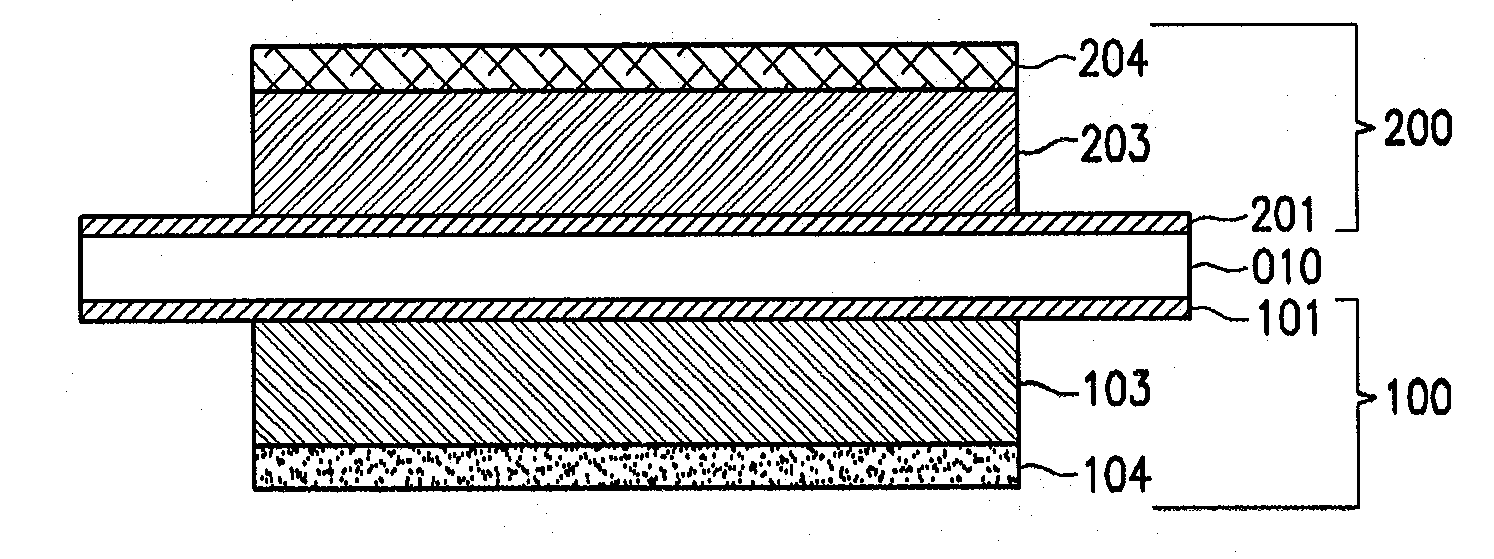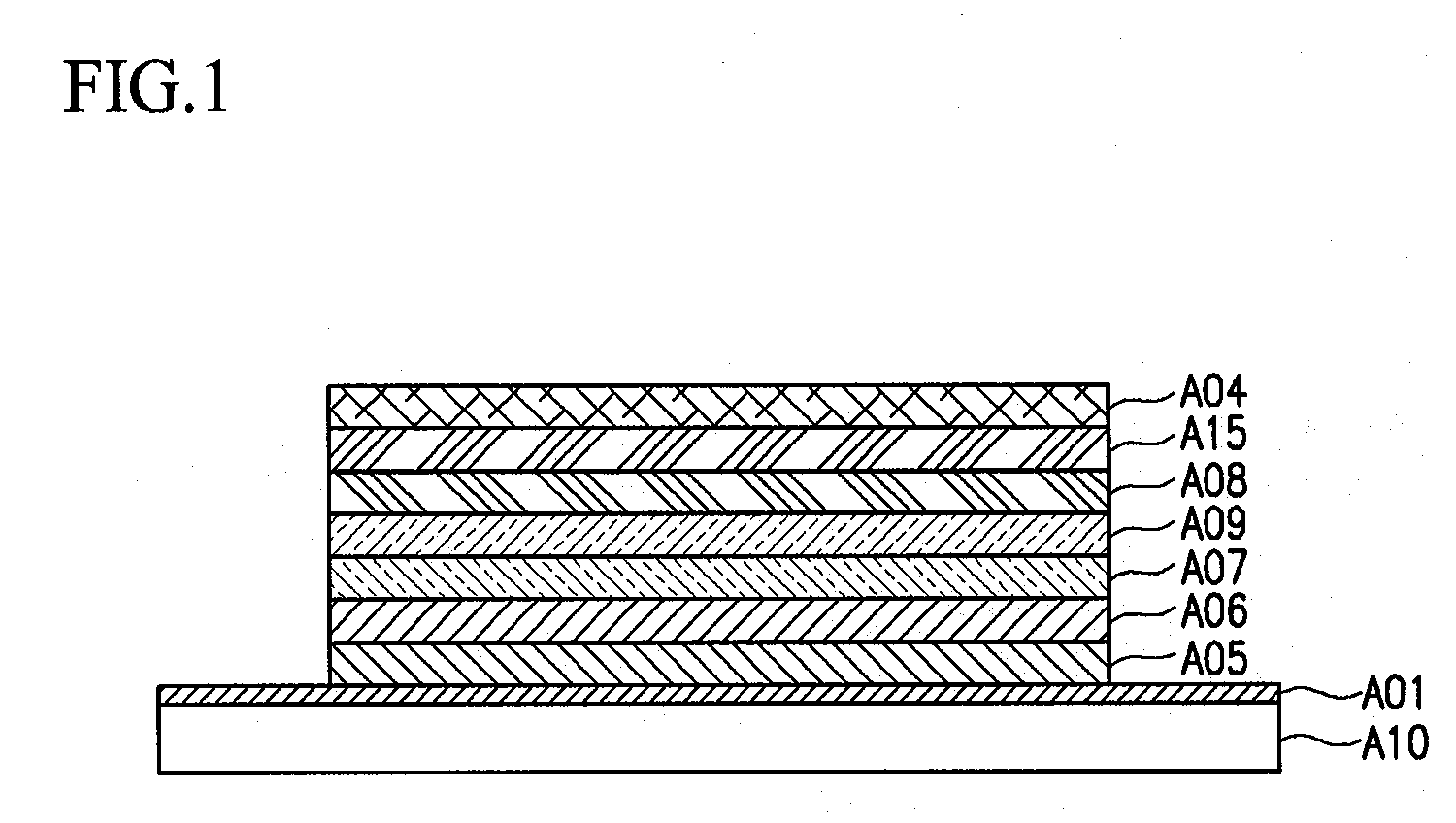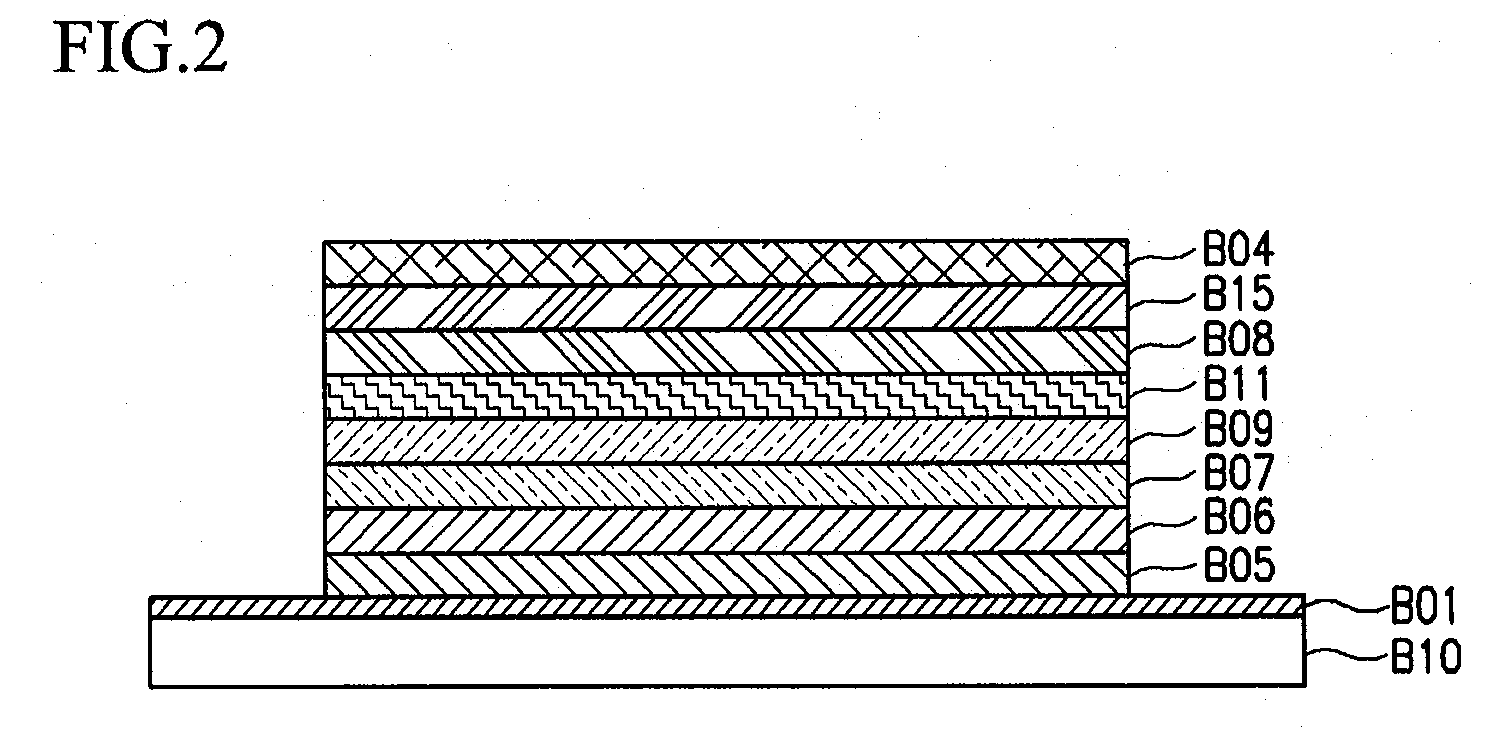White Light Emitting Organic Electroluminescent Device
a technology of electroluminescent devices and white light, which is applied in the direction of discharge tubes/lamp details, discharge tubes luminescnet screens, electric discharge lamps, etc., can solve the problems of reducing the lifespan of organic electroluminescent devices, reducing the heat generated by light emission, and consuming a small amount of power, so as to achieve long life, reduce heat generation, and high quality color
- Summary
- Abstract
- Description
- Claims
- Application Information
AI Technical Summary
Benefits of technology
Problems solved by technology
Method used
Image
Examples
example 1
[0071]ITO electrodes, which were used as the first anode and the second anode, were disposed in the upper and lower surfaces of a transparent glass substrate at a thickness of 1800 Å. To fabricate the first element, m-MTDATA was formed as the first hole injection layer at a thickness of 600 Å, and NPB was formed as the first hole transport layer at a thickness of 150 Å on the first anode.
[0072]The first electroluminescent layer was formed at a thickness of 300 Å by co-depositing Alq3 as the light emitting host and DCM as a dopant on the upper part of the first hole transport layer. The content of Alq3 was 95 wt %, and the content of DCM was 5 wt %.
[0073]Subsequently, the fabrication of the first element was completed by disposing Alq3 at a thickness of 300 Å as the first electron transport layer, LiF at a thickness of 10 Å as the first electron injection layer, and Al at a thickness of 2000 Å as the reflective cathode, sequentially.
[0074]A transparent cathode having optical transpar...
example 2
[0080]ITO electrodes, which were used as the first anode and the second anode, were disposed on the upper and lower surfaces of a transparent glass substrate at a thickness of 1800 Å. To fabricate the first element, m-MTDATA was formed as the first hole injection layer at a thickness of 600 Å, and NPB was formed as the first hole transport layer at a thickness of 150 Å on the first anode.
[0081]DPVBi was formed as a blue electroluminescent layer on top of the first hole transport layer at a thickness of 200 Å, and a 95 wt % Alq3 host and a 5 wt % DCM dopant were co-deposited as a red electroluminescent layer at a thickness of 150 Å.
[0082]Subsequently, the fabrication of the first element was completed by disposing Alq3 at a thickness of 250 Å as the first electron transport layer, LiF at a thickness of 10 Å as the first electron injection layer, and Al at a thickness of 2000 Å as the reflective cathode, sequentially.
[0083]A transparent cathode having an optical transparency of over 8...
PUM
 Login to View More
Login to View More Abstract
Description
Claims
Application Information
 Login to View More
Login to View More - R&D
- Intellectual Property
- Life Sciences
- Materials
- Tech Scout
- Unparalleled Data Quality
- Higher Quality Content
- 60% Fewer Hallucinations
Browse by: Latest US Patents, China's latest patents, Technical Efficacy Thesaurus, Application Domain, Technology Topic, Popular Technical Reports.
© 2025 PatSnap. All rights reserved.Legal|Privacy policy|Modern Slavery Act Transparency Statement|Sitemap|About US| Contact US: help@patsnap.com



